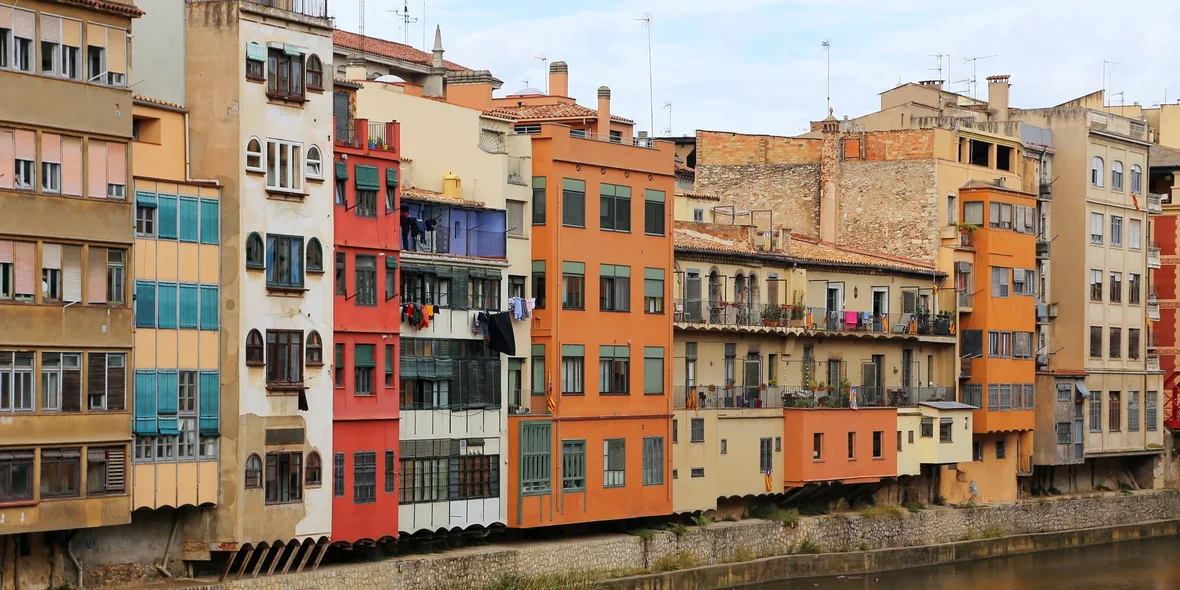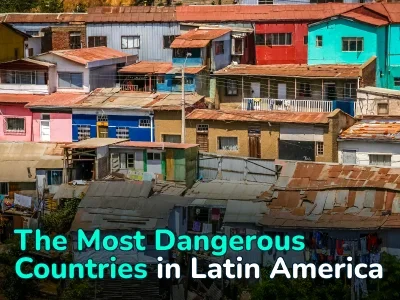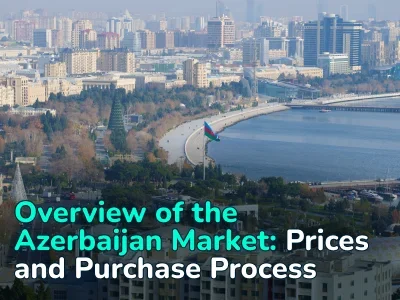
Where Not to Buy Property in Spain: an Overview of Problem Regions
The Spanish real estate market is going through another wave of growing interest, which makes property prices rise faster than incomes. As a result, the entry threshold for investors keeps increasing, and they are forced to look more closely at the less popular regions of the country.
Most of these locations are found in the inland parts of Spain. On the surface, they may seem attractive: low prices, peace and quiet, and sometimes historical architecture. However, not everything that is cheap is profitable.
Behind the modest prices often lie structural problems and stagnating demand caused by the weak economy of the region. People are leaving such areas because the lack of an economic base leads to higher unemployment. Real estate in these places can remain illiquid for many years, continue to lose value, and require constant maintenance expenses.
In this article, we will examine which regions and districts of Spain currently pose the greatest risks for property buyers, despite the seemingly attractive prices, and explain the reasons behind it.
The Worst Regions in Spain for Buying Real Estate
It is important to clarify at the outset that Spain has only 19 regions (autonomous communities), and their internal property markets are highly heterogeneous. Therefore, the most accurate unit of analysis for this ranking is the province. There are 50 provinces in total, not counting the autonomous cities of Ceuta and Melilla, and they provide a more concrete picture of the real estate market conditions.
Ciudad Real (Castilla-La Mancha)
Ciudad Real is one of the cheapest provinces in Spain. The average housing price here is around €740 per square meter, but this reflects underlying structural economic problems. The province’s economy is based mainly on agriculture (grape, grain, and olive cultivation) and small-scale manufacturing.
There are almost no large industrial or logistics centers, and the service sector outside the provincial capital is weak. The GDP per capita is about 30 percent below the national average.
Unemployment remains between 16 and 18 percent due to a lack of jobs, while young professionals move to Madrid (only 160 km away) or Valencia. Depopulation has also affected the local real estate market, which in Ciudad Real is mostly limited to student apartments in the provincial capital (home to the University of Castilla-La Mancha) and housing for seasonal workers. In small towns and rural areas, houses can remain on sale for 10 to 14 months.
Jaen (Andalucia)
The economy of Jaén province depends on agriculture for more than 60 percent of its output, primarily on olive oil production. Such a single-industry structure makes the region vulnerable to seasonal factors and fluctuations in global agricultural prices. When the harvest is poor or exports decline, unemployment increases.
The situation worsened after the closure of major industrial enterprises in the 2010s, particularly the Santana Motor automobile plant in Linares. Falling demand and population outflow have resulted in an average selling period of more than 10 months, while the actual transaction price is usually 10 to 15 percent lower than the asking price.
Badajoz (Extremadura)
Badajoz is the largest province in Extremadura, one of Spain’s economically weakest autonomous communities. The average housing price here is about €1,050 per square meter, while the unemployment rate is between 18 and 20 percent.
The main source of vulnerability is geographic isolation. The province lies far from major economic centers and has no access to the sea. Road and rail connections with Madrid and Seville are limited. This significantly reduces investment attractiveness and makes the development of industry or the service sector economically unviable.
Lugo (Galicia)
Lugo is a province in the northwest of Galicia. Over the past ten years, its population has declined by 8 percent, and more than 31 percent of residents are over the age of 65. Young people move to A Coruña, Santiago de Compostela, and Madrid in search of employment, since the province itself has almost no industrial or high-tech sectors.
The economy relies on agriculture and forestry, but these industries create few jobs and do not stimulate internal demand. The average housing price is around €1,000 per square meter.
Tourism exists but is concentrated along the coastline and the Way of St. James pilgrimage route, while the inland areas of Lugo remain outside the interest of travelers and investors. As a result, demand is weak, liquidity is low, and price growth is below 2 percent per year.
Cuenca (Castilla-La Mancha)
Cuenca is considered one of the most picturesque yet economically stagnant provinces in Spain. Although the provincial capital is listed as a UNESCO World Heritage Site, tourism is limited to seasonal activity and does not generate significant housing demand.
The average price is around €950 per square meter, but the region suffers from a shortage of jobs and poor transport connectivity. Even the presence of the A-3 highway and railway connections to Madrid have not revitalized the local economy.
Teruel (Aragon)
Teruel is often called a «ghost province.» With a population of about 135,000, its population density is only 9 people per square kilometer, the lowest in Europe. Moreover, over the past 20 years, the population has decreased by almost 15 percent, and the decline continues.
The average housing price is around €980 per square meter, but demand is minimal. The main problems are economic isolation and lack of employment opportunities. Teruel has no major industrial centers, and agriculture together with small businesses cannot retain young people. Another significant drawback is that the local airport does not operate passenger flights, and rail connections with major cities are irregular.
Almería (Andalusia)
Almería is often seen as a budget-friendly option for buying property on the Andalusian coast, and indeed, small coastal resorts are developing. However, the inland areas are deteriorating.
The average housing price in the province is about €1,350 per square meter. In coastal towns such as Mojácar or Agua Amarga, prices reach €2,000—2,500 per square meter, while in the interior areas (Berja, Uxador, Ohána) they rarely exceed €700—800 per square meter.
This gap reflects starkly different economic realities. First, the regional economy is extremely vulnerable to climate conditions, as Almería is the driest region in Europe. Agriculture, the main source of employment, depends on intensive irrigation and suffers from water depletion.
Second, the labor market is unstable. The unemployment rate exceeds 19 percent, and most jobs are seasonal, either in greenhouses or in the service sector. This makes housing demand highly volatile, dependent on the time of year and even on weather conditions.
Overall, development is concentrated only along the coast, where tourism supports the rental market. In the rest of the province, real estate brings little income and is difficult to sell.
Municipalities with the Most Challenging Real Estate Conditions
Spanish provinces cover large territories, so it is also important to consider specific municipalities in order to understand exactly where purchasing cheap property in Spain is not advisable.
La Línea de la Concepción (Province of Cádiz, Andalusia)
This city lies on the border with Gibraltar and has a population of about 63,000. The average housing price is around €1,250 per square meter. Despite its advantageous location, the economic and social situation remains one of the most difficult in Andalusia.
The city suffers from high unemployment (around 25–27 percent), crime rates above the regional average, and a lack of infrastructure investment. The real estate market is unstable because of a large number of vacant apartments, while almost no new construction projects are being developed.
According to data from Idealista, local properties typically take 10 to 12 months to sell. In most transactions, sellers agree to discounts of up to 15–20 percent.
Puertollano (Province of Ciudad Real, Castilla-La Mancha)
Puertollano is a former industrial hub that once specialized in petrochemicals and coal mining. After the closure of mines and the decline of industrial production in the 1990s and 2000s, the local economy never fully recovered.
Today, the unemployment rate exceeds 20 percent, and the population has fallen from 56,000 to under 45,000 over the past two decades. However, the average housing price is only about €780 per square meter. Demand is limited to local residents, while external buyers do not consider the city attractive for investment due to the lack of growth prospects.
Lorca (Province of Murcia)
Lorca is one of the largest cities in the Region of Murcia. A powerful earthquake in 2011 destroyed part of its historic center. Reconstruction work continued until 2016, but the real estate market has not fully recovered since then.
Currently, the average housing price stands at around €1,050 per square meter, which seems affordable, yet many older apartments remain unsold for years. The region also suffers from severe aridity and water scarcity, which limits the development of agriculture, the main source of local employment.
Ourense (Province of Ourense, Galicia)
Ourense is the administrative center of the province of the same name and a typical example of demographic and economic decline in northwestern Spain. Over the past 20 years, the city’s population has fallen by about 10 percent, and more than 30 percent of residents are over the age of 65, one of the highest rates in the country.
The average housing price is around €1,150 per square meter, yet transaction volumes remain low. Rental demand is weak because young people continue to move to A Coruña and Madrid. New construction is limited, while the secondary market is oversupplied: according to Idealista, property listings exceed demand by nearly two to one.
Úbeda (Province of Jaén, Andalusia)
Úbeda is a historic city almost entirely included in the UNESCO World Heritage list. This status gives it cultural recognition but does not protect it from economic stagnation.
With an average housing price of about €1,050 per square meter, rental profitability is low. Tourism is cultural but short and seasonal. Most buyers are local residents, and external investor interest is almost nonexistent.
Alcázar de San Juan (Province of Ciudad Real, Castilla-La Mancha)
Alcázar de San Juan was once a major railway hub on the route to Madrid, but its importance declined sharply as railway transport was reduced. The unemployment rate of 18 percent offsets the city’s affordability, even with housing prices around €900 per square meter.
There is practically no industry generating stable employment. Agriculture and small retail trade dominate but do not create real demand for buying or renting housing. Investment projects are extremely rare because the city is far from both the coast and ski resorts.
Écija (Province of Seville, Andalusia)
Écija is located between Seville and Córdoba. Overall, its situation is not as severe as in other municipalities: the average housing price is about €1,050 per square meter, and the city boasts many Baroque-style landmarks. However, Écija is nicknamed «La sartén de Andalucía» («the frying pan of Andalusia»), and with good reason. In summer, temperatures consistently reach 40—45°C and sometimes climb to 50°C. Investors and young people prefer to move to coastal cities, where the climate is milder and employment opportunities are greater.
Cáceres (Province of Cáceres, Extremadura)
Cáceres is the administrative capital of its province and a UNESCO World Heritage Site. Despite its historical status, the city’s economy remains one of the weakest among provincial capitals in Spain.
The main sectors are agriculture and small retail trade. The absence of major industry and the low population density of Extremadura result in stagnant housing demand and ongoing outward migration.
The average housing price is about €1,100 per square meter, unemployment stands at 17–18 percent, and market liquidity is very low. Many old apartments remain vacant for years. Although the city attracts some tourists, this flow does not create steady demand in the rental market.
Summary
The real estate market in Spain remains one of the most dynamic in Europe, but internal differences are enormous. While coastal areas and major metropolitan zones such as Madrid, Valencia, Barcelona, and Málaga continue to grow, a significant portion of the inland provinces is trapped in prolonged stagnation.
At first glance, low-priced regions may seem like entry points for investors with limited budgets, yet in practice they often turn into liquidity traps. Weak local economies, population decline, and minimal market activity make such properties difficult to sell and unprofitable to hold in the long term.
Author
I write informative articles about real estate, investments, job opportunities, taxes, etc.






















